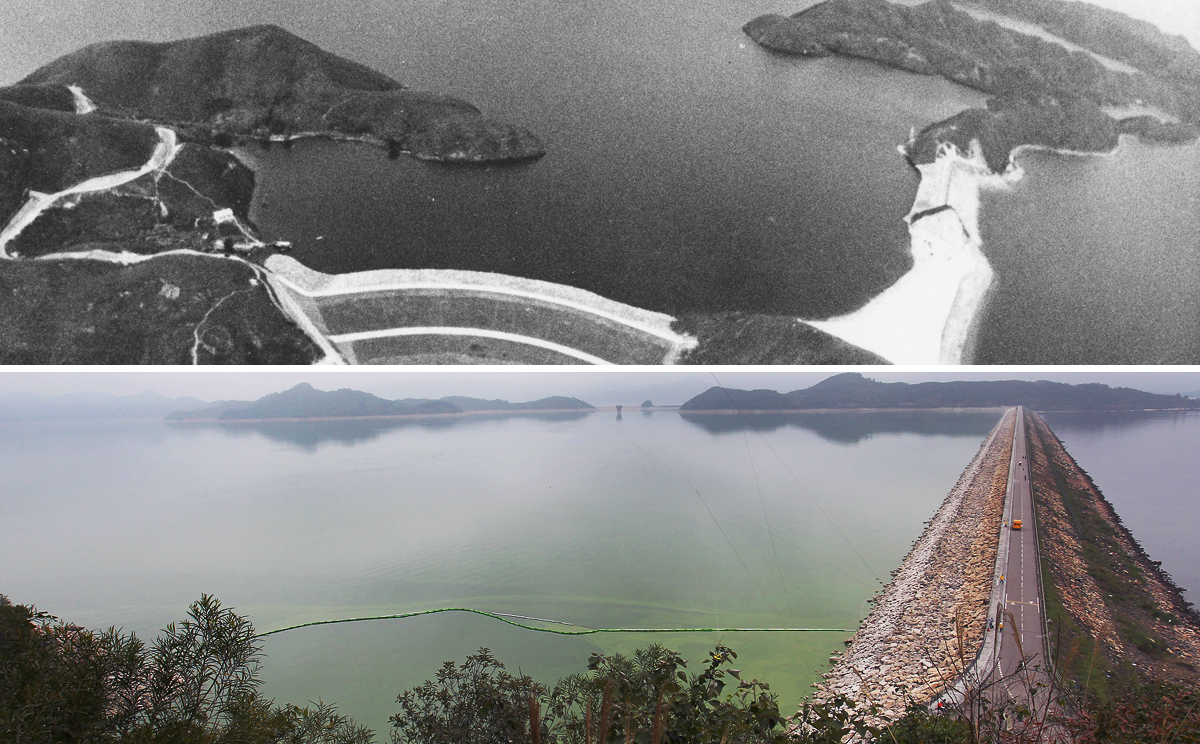
Almost 50 years ago the people of Sam Mun Tsai lost their homes to Plover Cove Reservoir - but the past lives on in their new village
In 1965, the 400 residents of Sam Mun Tsai were evicted from their homes, as the remote fishing village in Tai Po made way for a pioneering engineering project - the first ever reservoir carved from the sea: Plover Cove Reservoir.
Almost five decades on, hundreds of people who can trace their history to the lost village gathered in Sam Mun Tsai New Village, on an island less then 1km from their old home. As well as celebrating the Lunar New Year, they marked the 50th anniversary of the relocation of their ancestral village a little early - the actual date is not until July.
Joining the grand reunion were about 100 people who made an even more dramatic relocation, to Britain.
Now home to 2,000 people, the village made headlines in January when outsiders flocked to see a blue luminescent glow on its coastal waters. The spectacular sight was the result of an algal bloom caused by pollution.
But few visitors know the true story behind the village - that its tough fishermen sacrificed their way of life for the modern reservoir.
A look back through the South China Morning Post's photo archives offers a fascinating glimpse of the village that once stood.
"I am of the third generation in [the old] Sam Mun Tsai," says village elder Cheung Leung-chun, 93. "Both my grandfather and my father were fishermen. As a child I helped them catch fish and carried fish to the market. We were poor and never went to teahouses … I didn't go to school.
"Many fishing boats, some belonging to our own villagers and others from outside, were anchored there … When the Japanese came [in the second world war], we often saw warships."
Cheung gave up fishing a few years before the relocation and opened a small local grocery that sold daily essentials to his community. He still runs the store now, albeit at a different location.
"It was a barren area when we first moved in. There was no drinking water and we had to connect a pipe to Tung Tsz [a nearby village]. We slowly moved our belongings … by multiple boat trips," Cheung said of the new village.
Neighbour Shek Kwong-yin, 73, is now the village head. He said: "Our predecessors were simple people. When the government asked them to move, they just moved without asking a question. Many … were uneducated and just signed any document officials gave them."
The colonial administration built a row of two-storey houses for the 36 displaced families. Each got a 200 sq ft flat, still in use today. Villagers later built new houses as the population grew.
Compared with the old home, accessible only over water, Cheung enjoys the bus and minibus routes that make getting out convenient. But his son Cheung Yan-chee, 58, is nostalgic.
"It was picturesque, like what you see in films," he said of the place he called home until he was eight. "Marine life was rich … My elder brother and I enjoyed catching octopuses and clams.
"I was a happy child and never experienced poverty," he recalled. "We made toys from things we found outdoors. My favourite after-school activity was swimming."
Back in the old village, every household made its living from the sea. These days, only a handful of fishermen remain in the village, where 163 families now live. Educated younger people work in the city, and some move out.
Fisherman Ho Chor-sang, 67, says he and his peers will be the last generation to fish from Sam Mun Tsai. "My children won't fish any more. It is a tough job with unstable income. They are used to onshore life," he says.
Shek hopes the government will help families by redeveloping old flats.
He also wants Sam Mun Tsai recognised as an indigenous village. The status is granted to New Territories villages established before British rule began in 1898, and confers privileges on people with roots there, including the right to build homes.
